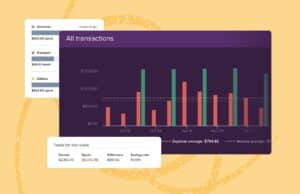In effective project management is essential for teams aiming to improve productivity and collaboration. The right Time Saving Software for Teams can make a huge difference in your organization.
Project management software offers a structured method for organizing tasks, facilitating communication, and tracking progress elements that are vital for achieving project goals.
This article examines the advantages of using project management tools, outlines key features to consider, and reviews some of the best options available.
Regardless of whether you are part of a small team or a large organization, you will find that the right software can save both time and resources.
What is Project Management Software?
Project management software serves as an essential tool that enables teams to effectively plan, execute, and monitor their projects, ultimately enhancing collaboration and productivity. In today s fast-paced work environment, successful project management hinges on various features, such as task management, resource allocation, and time tracking. These elements ensure that all project milestones are achieved while promoting clear communication and accountability within the team.
With a range of options available, from cloud-based solutions to desktop applications, these tools can accommodate diverse needs and methodologies, including agile practices, making them essential for both remote teams and traditional office settings.
This software is crucial across multiple industries as it incorporates features like Gantt charts for visualizing project timelines, Kanban boards for managing workflows, and comprehensive project dashboards that provide real-time insights into performance metrics. Such tools not only streamline daily operations but also enhance team dynamics by fostering transparent communication and ensuring that everyone is aligned with project goals.
Moreover, improved project reporting capabilities keep stakeholders informed and engaged, while effective resource management optimizes both time and budget allocations, resulting in enhanced overall project performance. In essence, these applications give the power to teams to deliver high-quality results while remaining adaptable to changing demands.
Benefits of Using Project Management Software
Utilizing project management software offers a range of benefits that can greatly enhance team performance and simplify workflow. These tools support effective time management, which is essential for meeting project deadlines and optimizing resource allocation.
With advanced features such as task delegation, deadline tracking, and project monitoring, teams can efficiently manage their responsibilities, resulting in increased productivity and successful project completion. Furthermore, this software promotes team collaboration by providing real-time updates and an intuitive interface, allowing for smooth communication and coordination among team members.
Increased Efficiency and Collaboration
One of the key advantages of project management software lies in its capacity to significantly boost efficiency and enhance team collaboration. By streamlining workflows and automating repetitive tasks, these tools allow team members to concentrate on high-priority activities, which leads to improved productivity. Features such as real-time updates, collaborative workspaces, and seamless file sharing enable effective communication among team members, ensuring alignment on project goals.
Furthermore, the integration capabilities of project management software allow various tools to work together smoothly, guaranteeing that all team members have access to the necessary information when they need it.
Project dashboards are particularly valuable, offering a visual overview of project timelines and milestones. This functionality allows teams to assess their progress at a glance. For instance, teams at a leading marketing firm experienced a 30% increase in project completion rates after implementing dashboard features, as it kept everyone engaged and mindful of deadlines.
Status updates play a critical role as feedback loops, allowing team members to share insights and address issues promptly. This two-way communication fosters a culture of transparency and encourages collaboration, making it easier to identify challenges and brainstorm solutions together. Ultimately, this approach transforms overall team dynamics and drives project success.
Time and Cost Savings
Implementing project management software can significantly save time and costs for organizations, making it a valuable investment. By utilizing effective time management and tracking tools, teams can ensure that project deadlines are met without unnecessary delays, which often lead to increased costs.
The ability to monitor project resources and track expenditures in real time enhances budget management and minimizes the risk of overspending. Consequently, organizations can allocate their financial resources more wisely, resulting in improved overall project management efficiency.
These time savings can have a direct impact on labor costs by reducing the need for overtime, allowing team members to complete their work within regular hours. Features such as project templates help streamline processes and cut down on planning time, while performance metrics provide essential insights for forecasting future resource needs.
This combination of enhanced foresight and efficient resource allocation ensures adherence to budgets, effectively reducing financial waste. Ultimately, as organizations become more adept at managing their timelines and resources, they are likely to see better financial outcomes, leading to a healthier bottom line and sustained growth.
Key Features to Look for in Project Management Software
When choosing project management software, it s important to take into account several key features that can greatly influence your team s productivity and the overall success of your projects.
Effective task management capabilities, such as task delegation and deadline tracking, play a vital role in keeping the project on track. Furthermore, robust project tracking tools like Gantt charts and Kanban boards enable teams to visualize their progress and pinpoint any potential bottlenecks.
Collaboration features, which include file sharing and email integration, help ensure smooth communication among team members. Lastly, customizable project templates can save time and improve consistency across various projects.
Task Management and Tracking
Task management and tracking are fundamental elements of any effective project management software, enabling teams to remain organized and efficiently meet project milestones. These tools facilitate easy task delegation, allowing team members to assign responsibilities based on individual strengths and current workload.
Features such as time tracking ensure that tasks are completed within the established deadlines, while project tracking functionalities provide valuable insights into the status of ongoing activities. This level of oversight not only promotes accountability but also enhances team performance by clarifying expectations and monitoring progress.
Visual project management techniques, like Kanban boards and Gantt charts, offer a clear and engaging way to visualize the workflow. These visual aids assist in identifying bottlenecks and potential delays, enabling users to make informed decisions quickly.
By prioritizing tasks visually, teams can concentrate on what matters most, fostering a more streamlined approach to achieving their objectives. The integration of these tools simplifies communication, as everyone can see who is responsible for what and when, making it easier to adjust priorities and allocate resources as necessary.
Ultimately, this comprehensive approach fosters a more productive and agile working environment.
Communication and File Sharing
Effective communication and file sharing are essential components of project management software that enhance collaboration and engage stakeholders. With integrated chat functions, real-time updates, and collaborative workspaces, team members can effortlessly share ideas, documents, and feedback, ensuring that everyone remains aligned. This level of connectivity is particularly crucial for remote teams, where clear communication can significantly influence the success or failure of a project. Robust file-sharing capabilities facilitate the secure exchange of important project resources, fostering a collaborative environment that boosts overall productivity.
To utilize these tools effectively, it is important to establish best practices, such as setting clear communication protocols, encouraging regular check-ins, and utilizing project timelines to keep everyone informed. When team leaders demonstrate how to leverage these features, they help cultivate a culture of openness and trust. By encouraging team members to share not only their progress but also their challenges and ideas, they collectively contribute to a supportive atmosphere that give the power tos everyone.
Such dynamics not only strengthen relationships but also drive innovation, ultimately leading to higher-quality outcomes and a more cohesive team experience.
Top Project Management Software Tools
With numerous project management software tools available today, it is crucial to understand the differences among them in order to make an informed choice for your team. Market leaders typically offer a wide range of features designed to address various project needs, such as task management, time tracking, and collaboration capabilities.
When comparing these software options, it is important to consider key aspects like usability, integration capabilities, and pricing plans, as these factors can significantly impact the effectiveness and affordability of the solution, whether for enterprises or small businesses.
Furthermore, user reviews and software recommendations can offer valuable insights into the advantages and disadvantages of each option.
Comparison of Features and Pricing
Comparing the features and pricing of various project management software is essential for identifying the most suitable option for your team’s specific needs and budget. Each software package presents unique features that cater to different project types, ranging from basic task management to sophisticated resource allocation tools.
By carefully analyzing pricing plans, organizations can identify solutions that align with their financial strategies while ensuring they have access to the necessary tools for effective project management. Additionally, it is important to evaluate user satisfaction and implementation strategies to facilitate a smooth transition and optimal use of the selected software.
For example, a tech startup may place a high priority on real-time collaboration features to ensure that remote teams remain synchronized, while a construction company may require robust scheduling and resource management tools. Understanding these particular project requirements can greatly affect not only the pricing but also the overall user experience.
Organizations such as Asana have successfully developed user-friendly interfaces that promote collaboration, while Trello offers a card-based layout that simplifies task tracking. When choosing the right tool, it is advantageous to gather input from team members who will be using the software regularly, and to consider options that provide trial periods for a better assessment of compatibility with existing workflows.
How to Choose the Right Software for Your Team
Selecting the appropriate project management software for your team requires thoughtful consideration of several factors to ensure it aligns well with your specific needs. Begin by clearly defining your team s requirements, such as task management capabilities, resource allocation, and collaboration features.
It’s beneficial to review software recommendations and read user reviews, as these can provide valuable insights into the experiences of others who have utilized these tools. Furthermore, it’s important to think about implementation strategies that will facilitate a smooth transition to the new software and encourage user adoption.
This approach helps establish best practices for effective project management.
Considerations and Recommendations
When evaluating project management software, there are several key considerations and recommendations that can greatly improve the selection process. It is important to identify features that resonate with your team’s workflow and culture, as these aspects can significantly influence user satisfaction and the overall success of projects.
Recommendations from industry experts and user reviews should inform your decision-making, allowing you to choose software that has demonstrated effectiveness in similar situations. Moreover, implementing best practices such as providing adequate training and establishing clear lines of communication can enhance team dynamics and ensure that the new software is utilized effectively.
Alongside these initial considerations, ease of use is paramount. Software that is intuitive will likely lead to higher adoption rates among team members. Additionally, integration capabilities are vital; selecting software that can seamlessly connect with existing tools will help streamline workflows and minimize disruptions.
It’s also essential not to underestimate the importance of customer support. Access to reliable assistance can significantly impact the speed with which issues are resolved. Finally, maintaining continuous feedback loops during the adoption process is crucial. This encourages teams to share their experiences, allowing for timely adjustments and fostering ongoing improvements in productivity and satisfaction.
Frequently Asked Questions
What is project management software and how can it help teams save time?
Project management software is a tool used to plan, organize, and manage projects. It helps teams save time by streamlining communication, task management, and project tracking in one central location.
What are some key features to look for in project management software to save time?
Some key features to look for include task management and assignment, deadlines and reminders, team collaboration and communication, and customizable project templates.
Can project management software be used for both small and large teams?
Yes, project management software can be used by teams of all sizes. It can be especially beneficial for large teams, as it helps to keep everyone organized and on the same page.
How does project management software save time compared to traditional project management methods?
Project management software saves time by eliminating the need for manual updates, reducing the risk of errors, and providing real-time project progress updates. It also allows for better communication and collaboration, reducing the time spent on back-and-forth emails or meetings.
What are some popular project management software tools for teams?
Some popular project management software tools for teams include Asana, Trello, Basecamp, and Monday.com. Each tool offers different features and pricing options, so it’s important to research and find the best fit for your team’s needs.
Can project management software help with time tracking and resource management?
Yes, many project management software tools include time tracking and resource management features. These features can help teams stay on track and make sure resources are being used efficiently, ultimately saving time in the long run.







